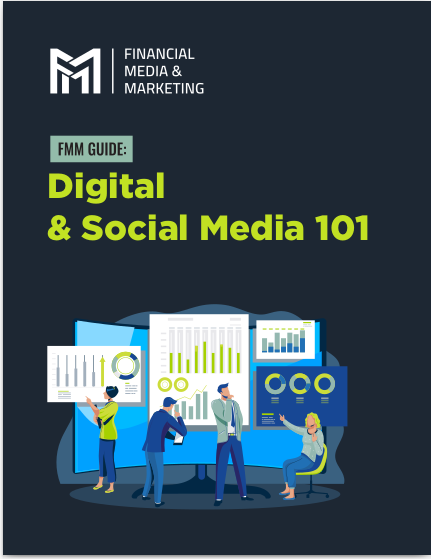Key Takeaways:
-
Aligning your social media strategy with your long-term goals enhances meaningful client engagement.
-
Prioritizing authentic connections builds trust and strengthens relationships over time.
Start with a Clear Vision for Social Media
Before diving into posts and campaigns, take a step back to define your social media goals. What do you want to achieve? For financial advisors, this might include building trust, generating leads, or educating your audience. Knowing your objectives ensures every post and interaction serves a purpose.
Align Social Media Goals with Business Objectives
Think of your social media goals as extensions of your business goals. For instance, if your focus is growing a niche audience, your social media strategy should include content tailored to that group. When your efforts align with your larger vision, your results will feel more cohesive and impactful.
Set SMART Goals
Set specific, measurable, achievable, relevant, and time-bound (SMART) goals for your social media activities. Instead of saying, “I want more followers,” aim for something concrete like, “I want to increase my LinkedIn connections by 20% in six months.” Clear benchmarks keep you motivated and on track.
Know Your Audience Inside Out
Understanding your audience is the cornerstone of effective engagement. Social media isn’t about broadcasting; it’s about connecting.
Define Your Ideal Client
What challenges does your target audience face? What questions are they asking? Knowing these details helps you craft content that resonates. For financial advisors, this might include addressing concerns about retirement planning or investment strategies.
Use Analytics to Gain Insights
Platforms like LinkedIn and Instagram offer analytics tools that reveal your audience’s demographics, interests, and behaviors. Use this data to refine your content strategy and ensure you’re speaking to the right people.
Craft Content That Resonates
Your content is the bridge between you and your audience. To foster genuine engagement, focus on delivering value with every post.
Educate and Inform
Financial topics can be complex, but breaking them down into digestible insights builds credibility. Share tips, explain industry trends, or clarify common misconceptions. Educational content positions you as a trusted expert.
Use Storytelling
Stories humanize your brand and make your message relatable. Share hypothetical scenarios or general case studies that illustrate how your advice can impact someone’s financial journey.
Mix Up Your Content Formats
Keep your feed dynamic by using a variety of formats, such as:
-
Text posts: Ideal for quick tips or updates.
-
Videos: Great for explaining concepts or answering FAQs.
-
Infographics: Perfect for visualizing data or step-by-step guides.
-
Polls and Q&A sessions: Encourage interaction and gather insights.
Be Consistent Without Being Overwhelming
Consistency is key to staying visible and relevant on social media. However, balance is crucial; you don’t want to overwhelm your audience.
Create a Posting Schedule
Decide how often you’ll post and stick to it. For most platforms, 3-5 posts per week is a good starting point. Scheduling tools can help you maintain regularity without requiring daily effort.
Focus on Quality Over Quantity
It’s better to post less frequently with high-quality content than to flood your audience with mediocre updates. Make sure each post aligns with your goals and offers value.
Foster Genuine Engagement
Engagement is about two-way interaction, not just pushing out content. Building a loyal online community requires active participation.
Respond Promptly to Comments and Messages
Acknowledging interactions shows your audience that you value their time and input. Even a simple “thank you” can go a long way in fostering goodwill.
Ask Questions and Invite Participation
Encourage your audience to share their thoughts by asking open-ended questions. For example, you could ask, “What’s your biggest financial goal for the next five years?” This not only sparks engagement but also gives you valuable insights.
Join Relevant Conversations
Participate in industry discussions or trending topics to expand your reach and showcase your expertise. Use hashtags wisely to connect with a broader audience.
Build Trust Through Authenticity
Authenticity is non-negotiable in today’s social media landscape. Clients want to connect with real people, not faceless brands.
Show Your Human Side
Let your audience see the person behind the profile. Share your motivations, values, and even small glimpses into your day-to-day life. This builds relatability and trust.
Avoid Overly Promotional Content
While it’s okay to highlight your services occasionally, focus on providing value rather than making a hard sell. Overly promotional posts can come across as insincere and alienate your audience.
Evaluate and Adjust Your Strategy
Social media strategies aren’t static. Regular evaluation helps you identify what’s working and what needs tweaking.
Track Key Metrics
Focus on metrics that align with your goals, such as:
-
Engagement rate: Likes, comments, and shares per post.
-
Reach: The number of people who see your content.
-
Conversion rate: How many leads or actions result from your posts.
Conduct Quarterly Reviews
Every three months, review your performance and adjust your strategy accordingly. Did you meet your goals? If not, identify the gaps and refine your approach.
Experiment with New Approaches
Social media trends evolve quickly. Don’t be afraid to experiment with new features or platforms. For example, if video content is trending, try incorporating short videos into your strategy.
Align Social Media with Your Long-Term Goals
Social media should be a tool that supports your broader objectives, not a distraction.
Integrate Social Media with Your Marketing Plan
Your social media efforts should complement other marketing channels, such as email campaigns or webinars. A cohesive strategy ensures all your efforts work toward the same goals.
Focus on Relationship Building
Rather than chasing vanity metrics like follower counts, prioritize meaningful interactions that lead to long-term relationships. Loyal clients are more likely to refer others and contribute to your success.
Stay Patient and Persistent
Building a strong social media presence takes time. Stay consistent, keep refining your strategy, and trust the process. Over time, your efforts will pay off in the form of stronger client relationships and a steady stream of leads.
Turning Engagement into Long-Term Success
When done right, social media can be a powerful tool for financial advisors. By focusing on authentic connections, delivering valuable content, and aligning your strategy with your goals, you’ll create a social media presence that not only engages but also drives lasting success.










